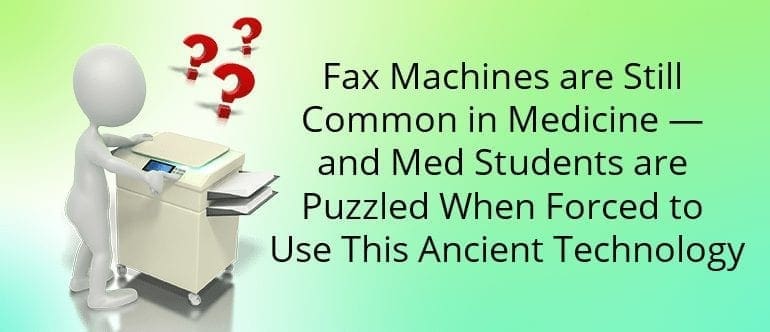Call us toll-free: 800-878-7828 — Monday - Friday — 8AM - 5PM EST

Christina Farr for CNBC
Amol Utrankar was in his second year of medical school and working a shift at Vanderbilt University Medical Center in Tennessee, when a supervisor asked him to obtain a new patient’s medical records.
Utrankar, who was 22 at the time, needed to get the records from a smaller community hospital, where the patient was previously getting treatment. That involved filling out a standard records request form with the patient’s signature, and faxing it over.
The only problem? Utrankar did not know how to use a fax machine.
After consulting a nearby nurse, Utrankar learned how to input a number by putting the page in the right slot, physically pressing the buttons, dialing out, and collecting a confirmation fax. But after he sent the request, unlike with email or SMS messages, he had no idea whether the right person had received it.
“I had zero context for how to make it work,” said Utrankar.
Utrankar is far from alone. Thousands of would-be doctors from across the country are learning to use outdated technologies like pagers and fax machines for the first time while in medical training. About a dozen medical students told CNBC that they had never seen a fax machine before, let alone operated one.
Resurrecting the dinosaur
Fax machines have all but disappeared in most industries, but continue to thrive in health care.
Part of the reason is tradition, as many older doctors simply feel comfortable with the technology and refuse to let it go.
It’s also considered safe and secure under today’s privacy laws. HIPAA, the federal regulations that govern how patient health records are shared, specifically state that fax machines or mail are acceptable methods for doctors to transmit a medical record.
Health care has also been slower to digitize than other sectors.
Until recently, most patient medical records were stored on paper. It took a huge investment of federal dollars to incentivize doctors to adopt digital systems, known as electronic medical records. But it remains a challenge for doctors to share patient information, especially with hospitals that use a different electronic medical record vendor.
For these reasons, many technologists are skeptical that the medical community will adopt an alternative anytime soon.
“Every hospital, no matter how small, has a fax machine, so it’s the safest and easiest way to get the information you need,” said Nate Gross, a physician and the co-founder of Doximity, a start-up that came up with a product called DocFax that lets doctors send faxes without a physical fax machine.
“It will take another decade or two before health care is no longer reliant on the fax machine,” he said.
Hurting patients
Young medical students might feel frustrated that they’re forced to use such ancient technologies in their workplace. But many shared a greater concern about the impact on their patients.
Medical offices that receive fax requests are sometimes only open for a few hours. And information can arrive in a piecemeal fashion, which requires further requests (and faxes). There’s also the security risk of having sensitive patient records sit in a fax machine, where anyone walking past could take a look.
Jordan D. Anderson, a student at Harvard Medical School, recalls a recent case where he needed to make a request for a patient’s records in the middle of the night. That particular patient had gotten sick while at the airport and had only been in town to visit family. So their records were elsewhere.
It took four hours before the doctors at Harvard received the necessary medical information.
That’s a long time for a medical team to wait for access to notes, charts, procedures, test results and more. That kind of delay often leads to duplicate tests to rule out potential diagnoses, which are expensive and potentially avoidable.
“Clearly the technology exists to allow us to have access to another hospitals’ medical record system and just search for the thing we need,” said Anderson.
Medical record vendors like Epic Systems are addressing the problem for hospitals that use its software, although that doesn’t extend to those outside the network. And new open standards are popping up to exchange health information electronically. Even consumer technology companies like Apple and Alphabet are getting involved to give patients better access to their own information.
But for now, the fax machine is here to stay.
